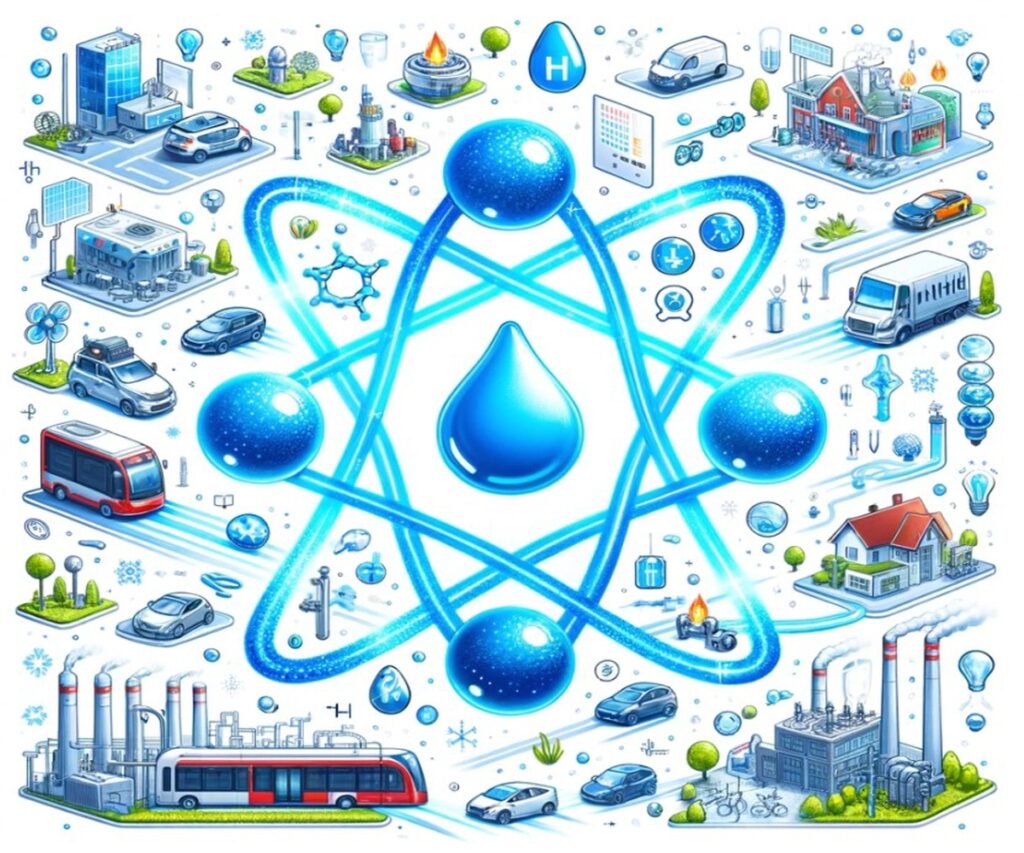Introduction
In today’s global economy, sustainability has become an essential consideration in all aspects of industrial operations, including the selection of chemicals and materials. As environmental concerns rise and regulations become stricter, companies are increasingly motivated to integrate sustainable practices into their decision-making processes. The selection of chemicals and materials that align with sustainability goals is not only crucial for reducing environmental impact but also for enhancing a company’s reputation, complying with regulations, and meeting customer expectations.
Sustainability in chemical and material selection involves evaluating the environmental, social, and economic impacts of these substances throughout their life cycles. This evaluation helps companies to make informed choices that support long-term environmental goals, such as reducing greenhouse gas emissions, minimizing waste, conserving resources, and promoting circularity.

The Role of Sustainability in Chemical and Material Selection
Sustainable Chemistry: An Overview
Sustainable chemistry is a concept that seeks to improve the efficiency with which natural resources are used to meet human needs for chemical products and services. It encompasses the design, manufacture, and use of chemical products and processes that are efficient, effective, safe, and more environmentally benign. The OECD has played a significant role in advancing sustainable chemistry, recognizing it as a proactive strategy for preventive risk management in the chemical industry.
The principles of sustainable chemistry encourage the development of safer chemicals that minimize risks to human health and the environment. These principles also promote the use of renewable resources, the reduction of waste, and the implementation of energy-efficient processes. By adopting sustainable chemistry practices, companies can not only reduce their environmental footprint but also drive innovation and enhance their competitiveness in the market.
Key Sustainability Attributes in Chemical and Material Selection
When selecting chemicals, companies consider a range of sustainability attributes that help determine the overall impact of a substance on the environment and society. These attributes include greenhouse gas emissions, waste generation, resource use, and circularity.

1. Greenhouse Gas Emissions:
- Chemicals that contribute significantly to greenhouse gas emissions are often scrutinized more closely in the material selection process. Companies are increasingly seeking to reduce their carbon footprints by choosing chemicals that have lower associated emissions during production, use, and disposal.
- The adoption of standards like the Greenhouse Gas (GHG) Protocol and ISO 14067 helps companies quantify and manage the carbon footprint of their chemical products.
2. Waste Generation:
- The amount and type of waste generated by chemical processes are critical considerations. Companies aim to minimize hazardous and solid waste, as well as water pollution, by selecting chemicals that produce less waste or that are easier to treat and dispose of safely.
- The Zero Discharge of Hazardous Chemicals (ZDHC) program is one example of an initiative that guides companies in reducing waste, particularly in industries like textiles and apparel.
3. Resource Use:
- Sustainable chemical and material selection also involves evaluating the use of natural resources, such as water, fossil fuels, and raw materials. Companies are encouraged to choose chemicals that require fewer resources or that utilize renewable resources, thereby reducing the overall environmental impact.
- Resource efficiency is closely linked to the principles of circularity, where the focus is on maximizing the use of materials and minimizing waste through recycling and reuse.
4. Circularity:
- Circularity refers to the ability of a material to be reused, recycled, or repurposed, thereby extending its lifecycle and reducing waste. In the context of chemical and material selection, circularity involves choosing chemicals that can be part of a closed-loop system, where waste is minimized, and resources are continually reused.
- The growing focus on circularity is reflected in initiatives like the Ellen MacArthur Foundation’s Circular Economy framework, which promotes the design of products and processes that support sustainable material flows.
Factors Influencing Sustainability in Chemical and Material Selection
Sustainability Metrics and Standards
The adoption of sustainability metrics and standards is essential for assessing the environmental and social impacts of materials used in various industries. These standards provide a framework for measuring and reporting on sustainability attributes, helping companies make informed decisions.
1. Life Cycle Assessment (LCA):
- LCA is a widely used methodology for evaluating the environmental impacts of a product or material throughout its life cycle, from raw material extraction to disposal. It helps companies identify hotspots where improvements can be made to reduce environmental impact.
- LCA is particularly useful in the selection of materials as it provides a comprehensive view of the sustainability performance of different options.
2. Industry-Specific Standards and Certifications:
- Various industry-specific standards and certifications guide companies in selecting materials that meet sustainability criteria. For example, the Roundtable on Sustainable Palm Oil (RSPO) certification ensures that palm oil is produced in a way that minimizes negative impacts on biodiversity.
- Similarly, the Responsible Down Standard (RDS) certifies the ethical sourcing of down in the textile industry, addressing concerns related to animal welfare and environmental impact.
3. Challenges in Measuring Sustainability:
- Despite the availability of standards and metrics, measuring sustainability remains a challenge for many companies. The diversity of metrics and the complexity of integrating them into a cohesive sustainability strategy can be overwhelming.
- Companies often face difficulties in obtaining accurate data from their supply chains, particularly for Scope 3 emissions, which include indirect emissions from activities outside the company’s control.
Case Studies
To illustrate the application of sustainability principles in chemical and material selection, consider the following case studies:
1. Case Study 1: Sustainable Chemical and Material Selection in the Textile Industry
- A leading textile company implemented a sustainable chemical and material selection process by adopting the Cradle-to-Cradle certification, which evaluates the environmental and social impacts of materials. The company focused on using organic cotton, recycled polyester, and low-impact dyes, reducing its overall environmental footprint.
- The company also engaged in partnerships with suppliers to improve transparency and traceability in its supply chain, ensuring that the selected materials met the highest sustainability standards.
2. Case Study 2: Circular Economy in the Electronics Industry
- An electronics manufacturer adopted a circular economy approach by designing products that could be easily disassembled and recycled. The company selected materials based on their recyclability and durability, ensuring that the products could be part of a closed-loop system.
- The manufacturer also invested in take-back programs, encouraging customers to return used products for recycling, thereby reducing electronic waste and promoting resource efficiency.
Emerging Trends in Sustainability and Chemical and Material Selection
Innovation in Sustainable Chemistry
The field of sustainable chemistry is rapidly evolving, with new innovations and initiatives emerging to address the challenges of sustainability in the chemical industry. One such initiative is the European Union’s Safe and Sustainable by Design (SSbD) framework, which aims to promote the development of chemicals and materials that are both safe and sustainable.
1. Safe and Sustainable by Design (SSbD):
- SSbD is a non-regulatory approach that supports the design, development, production, and use of chemicals and materials that provide a desired function while minimizing negative impacts on human health and the environment.
- The SSbD framework encourages companies to consider both the safety and sustainability of chemicals from the earliest stages of product development, ensuring that new products meet high standards of environmental and social responsibility.
2. Future Directions:
- As sustainability becomes an increasingly important consideration in chemical and material selection, new standards and metrics are likely to emerge to address evolving challenges. For example, the integration of biodiversity considerations into chemical and material selection is expected to gain traction as companies seek to minimize their impact on ecosystems.
- The growing importance of circularity will also drive innovation in material design, with a focus on developing products that can be easily reused, recycled, or repurposed.
Conclusion
The integration of sustainability into chemical and material selection is not just a trend but a necessity in today’s environmentally conscious market. By considering sustainability attributes such as greenhouse gas emissions, waste generation, resource use, and circularity, companies can make informed decisions that reduce their environmental impact and enhance their competitive advantage.
The adoption of industry-specific standards, certifications, and measurement tools like LCA is essential for assessing and improving the sustainability performance of chemicals and materials. However, challenges remain, particularly in measuring and managing the diverse range of sustainability attributes across different industries.
As the field of sustainable chemistry continues to evolve, companies must stay informed about emerging trends and innovations, such as the Safe and Sustainable by Design framework, to ensure that their products meet the highest standards of environmental and social responsibility.
By prioritizing sustainability in their chemical and material selection processes, companies can contribute to a more sustainable future, aligning their operations with global environmental goals and meeting the growing expectations of customers, regulators, and investors.
Source:
OECD (2024), A Landscape of Sustainability Attributes Considered by Companies During Chemical and Material Selection, OECD Series on Risk Management of Chemicals, OECD Publishing, Paris, https://doi.org/10.1787/9475d147-en.
※This report has been prepared for general information purposes, and you may freely quote or reproduce the contents of this report for non-commercial purposes as long as the source of the contents is indicated. If you need to make a decision or need more information, please consult with CHEMiFORGE or an expert.


